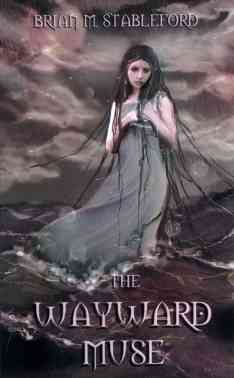Review by Sally Startup
This is a book for those who really savour the pleasure of reading.
Containing two short stories and a novella set on the island of
Mnemosyne, the book takes the reader into a decadent world similar to
our own late nineteenth century Europe, but where Rome never fell to the
barbarians. The focus of reading pleasure is in the artists' colony of
Mnemosyne. As stated in the introduction, the three stories are about
"the porous interface between artistic inspiration and the
supernatural", something which readers explore, as well as writers, even
when they are not aware of doing so.
The stories unfold at a gentle pace, with mind-expanding musings
about art, which are not "asides", but essential to the whole. There are
eccentric, yet humanly vulnerable characters, with intriguing names:
Vashti Savage; Hecate Rain; Claudius Jaseph; Conrad Othman; Constable
Clovis; Morloc Hyat; the Sisters of Shalimar. Most intriguing of all is
the first person narrator, Axel Rathenius, who has lived on the island
longer than anyone else can remember, and is older than he looks.
Axel claims that his only loyalty is to the cause of art, and yet he
is not detached from the people around him. He is astute and
compassionate in his descriptions of the other characters, and his
narration includes enough self-doubt to make it believable. As the
stories weave the characters together, exploring the nature and
possibilities of their artistic endeavours, Axel plays an active part,
and often manipulates events, but he is not in sole charge. He is,
however, the interpreter of events on behalf of the reader, and his
insights are fascinating.
The philosophical musings fit into these stories comfortably, both
because they are integral to the stories, and also because the
story-telling is so skilfully done that it appears natural, allowing
space for the thoughtful passages. Ghosts as works of art, for instance,
is a wonderful idea that makes perfect sense in the context of the
stories; Morpheomorphism, the purest of the arts, is something well
worth imagining; And the subject of ourselves as works of art is
enlightening.
Brian's introduction to the stories suggests that he may write more
about Mnemosyne in the future, and I really hope he does. It is a place
I have joyously escaped to countless times, reading The Wayward Muse
over and over again. I recommend it to thoughtful and artistic
readers.
|


